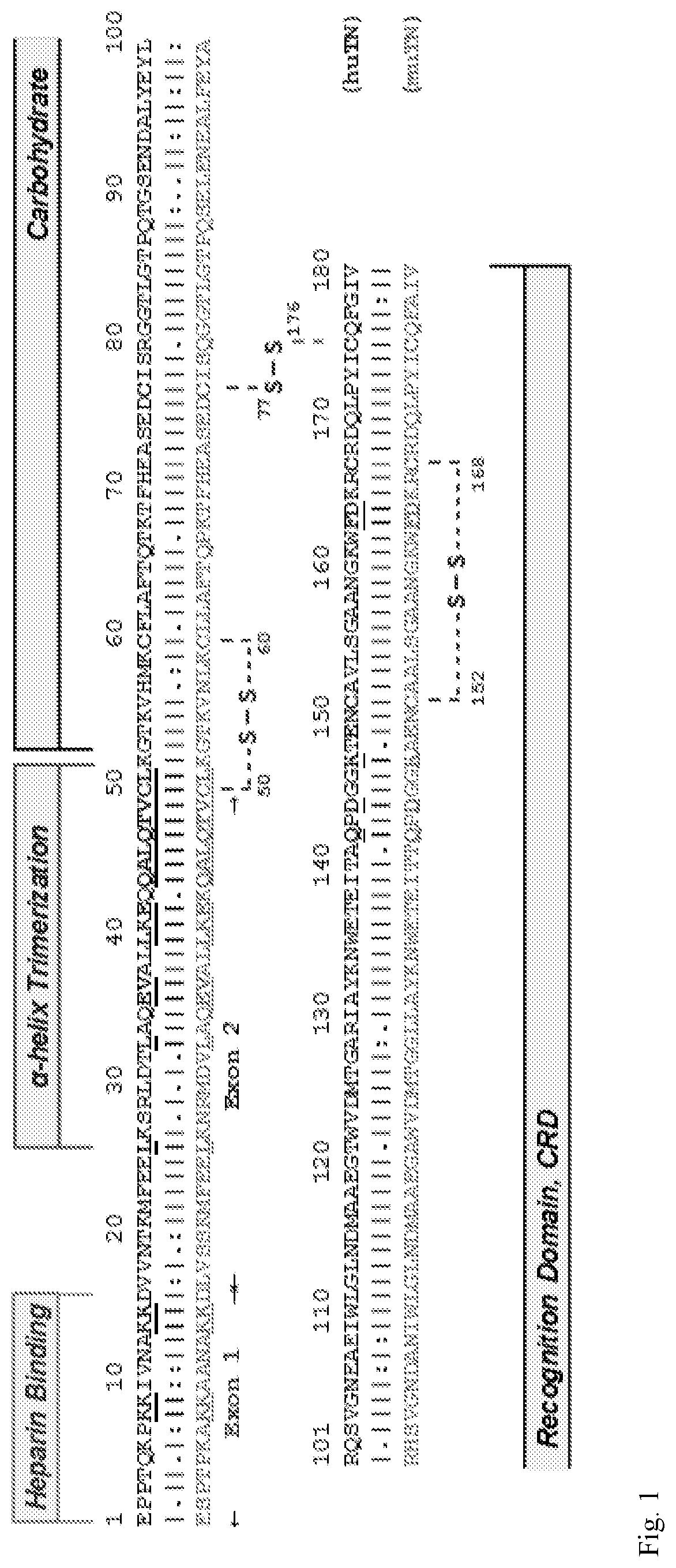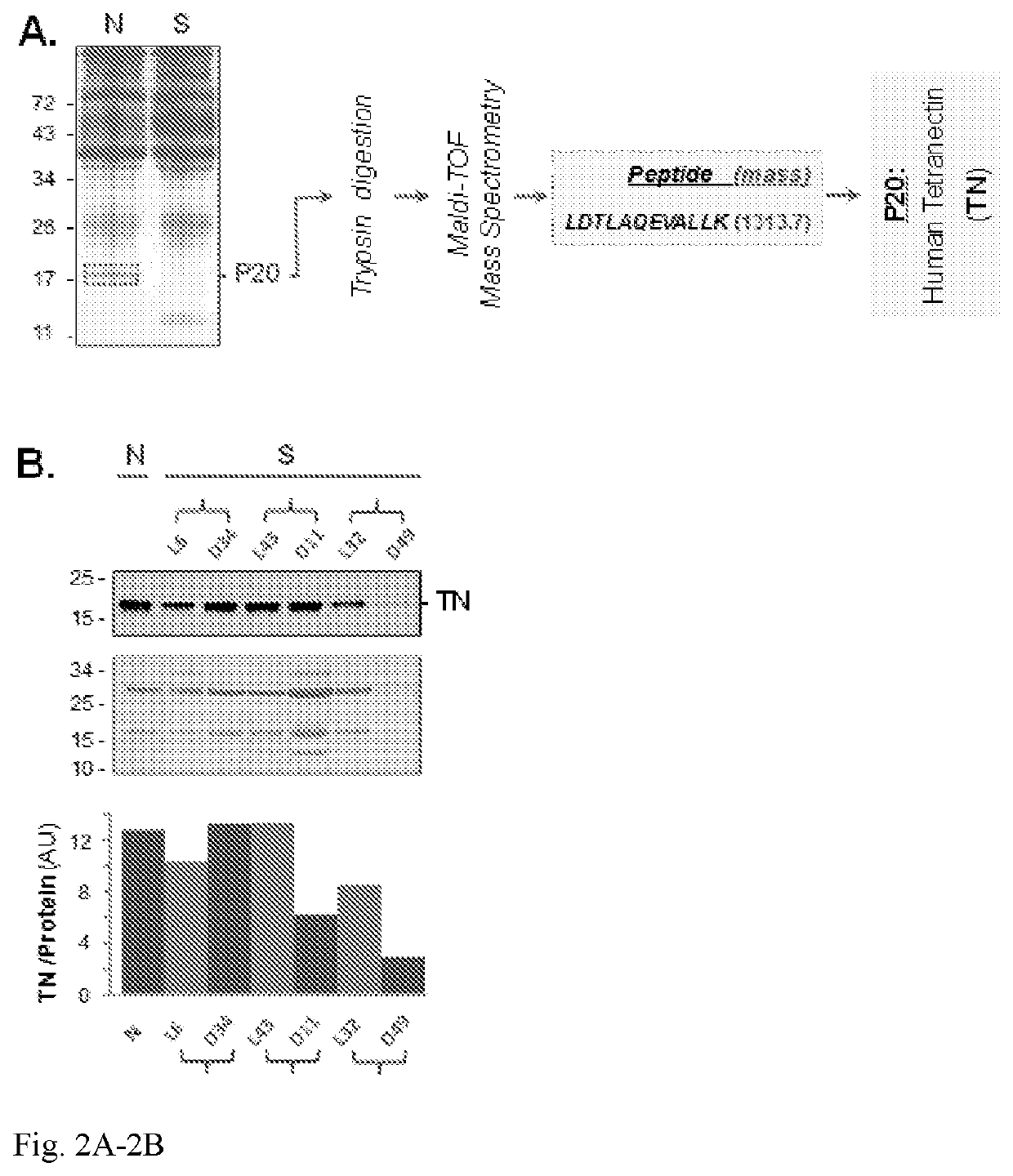Use of tetranectin and peptide agonists to treat inflammatory diseases
a technology of tetranectin and peptide agonists, which is applied in the direction of peptide/protein ingredients, drug compositions, extracellular fluid disorders, etc., can solve the problems of high mortality rate, common and difficult to treat sepsis, and widespread problems of bacteria infections and sepsis in critically ill patients, so as to reduce the likelihood of endotoxemia or sepsis developmen
- Summary
- Abstract
- Description
- Claims
- Application Information
AI Technical Summary
Benefits of technology
Problems solved by technology
Method used
Image
Examples
example 1
[0065]It was discovered that the high mobility group box-1 (HMGB1) protein [12] is actively secreted by IMCs in response to the stimulation with various PAMPs (e.g., LPS or CpG-DNA) [12,13] or host proinflammatory cytokines (e.g., IFN-γ, IFN-β, CIRP, and SAA) [14-17]. Once released, extracellular HMGB1 functions as an alarmin signal to alert, recruit and activate IMCs [18-22], thereby sustaining a rigorous and potentially injurious LSI. In animal models of lethal endotoxemia and sepsis (induced by cecal ligation and puncture, CLP), circulating HMGB1 levels plateau within 24-36 h [12,23], distinguishing it from TNF and other early cytokines [24]. Moreover, HMGB1-neutralizing antibodies [12,23,25] confer protection against lethal endotoxemia and sepsis, even when the first dose was given 24 h after CLP, establishing HMGB1 as a “late” mediator of sepsis with a relative wider therapeutic window [24,26-28].
[0066]Recently, HMGB1 has also been implicated in the pathogenesis of the dys-regu...
example 2
[0085]Two tetranectin agonist peptides were tested, one of which has an norleucine amino acid substitution from the native sequence (both are non-naturally occurring fragments of the tetranectin monomer which is typically found as an aggregate of 3 units of tetranectin and one unit of plasminogen, mediated through the trimerization domain of tetranectin). Male Balb / C mice were subjected to lethal sepsis by cecal ligation and puncture (CLP), and TN peptide agonist, P2 (55-KVHMKCFLAFTQTKTF-70) (SEQ ID NO:2) or P2-M / Nle (54-TKVH(Nle)KSFLAFTQTKT-69) (SEQ ID NO:13) was given intraperitoneally at indicated dosing regimens. Animal survival rates were monitored for more than two weeks to ensure no later death. Shown was a summary of independent experiment with N=10 animals per group. The Kaplan-Meier method was used to compare the difference in mortality rates between groups. *, P<0.05 versus “CLP+Vehicle” group. The results are shown in FIG. 13.
PUM
| Property | Measurement | Unit |
|---|---|---|
| pH | aaaaa | aaaaa |
| concentrations | aaaaa | aaaaa |
| affinity | aaaaa | aaaaa |
Abstract
Description
Claims
Application Information
 Login to View More
Login to View More - R&D
- Intellectual Property
- Life Sciences
- Materials
- Tech Scout
- Unparalleled Data Quality
- Higher Quality Content
- 60% Fewer Hallucinations
Browse by: Latest US Patents, China's latest patents, Technical Efficacy Thesaurus, Application Domain, Technology Topic, Popular Technical Reports.
© 2025 PatSnap. All rights reserved.Legal|Privacy policy|Modern Slavery Act Transparency Statement|Sitemap|About US| Contact US: help@patsnap.com



